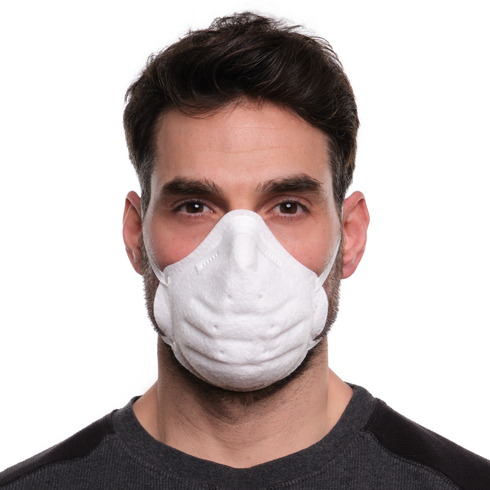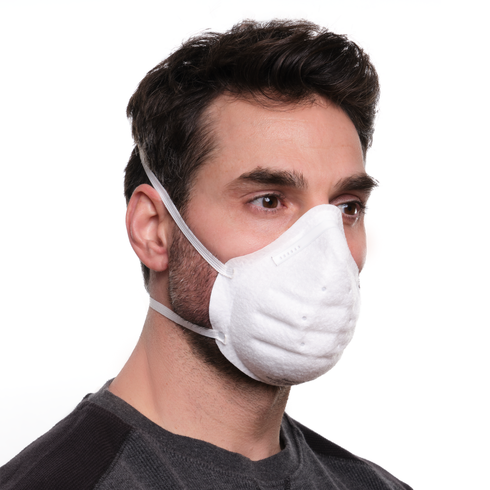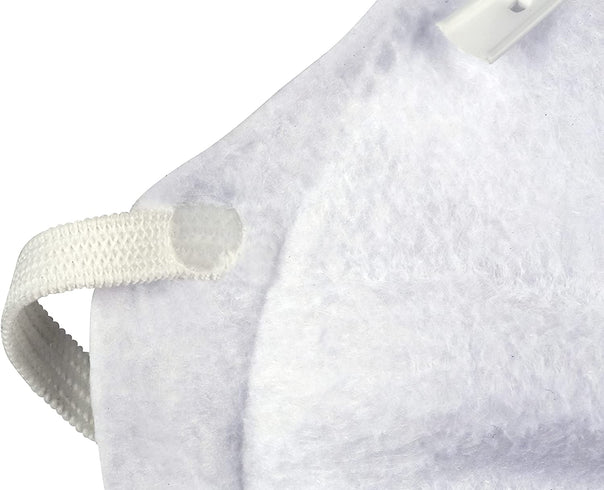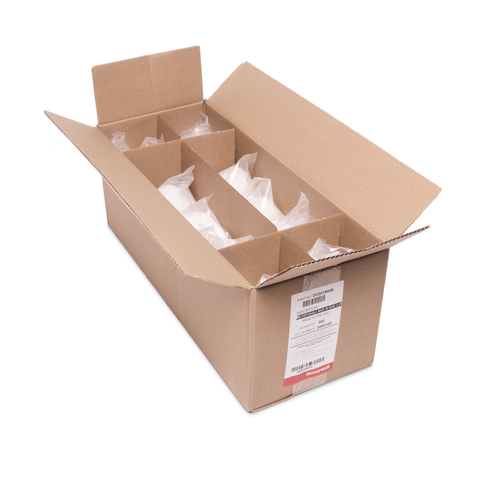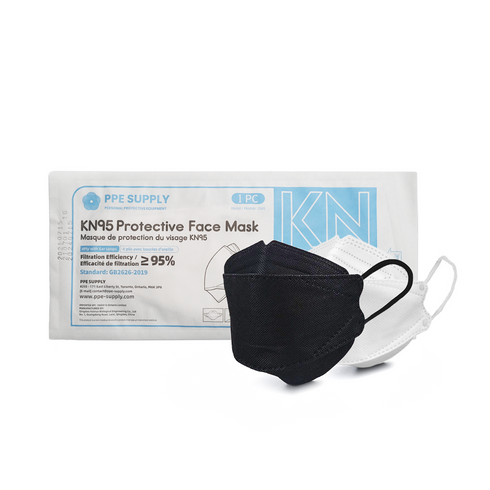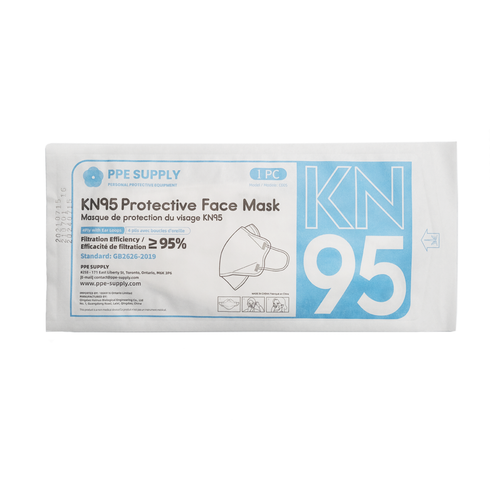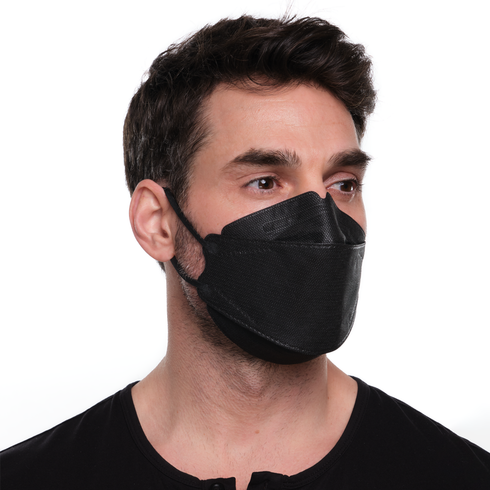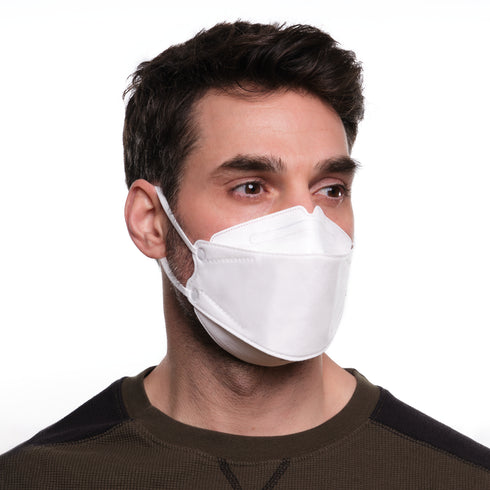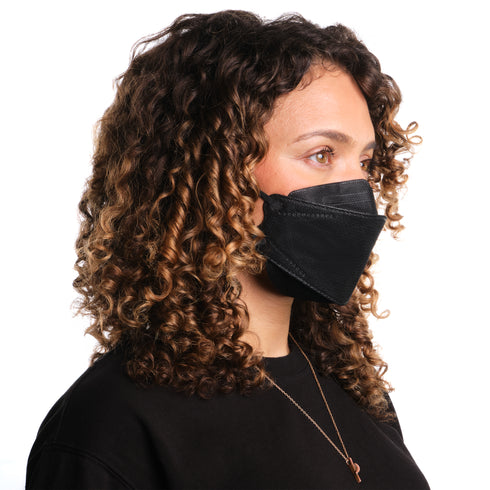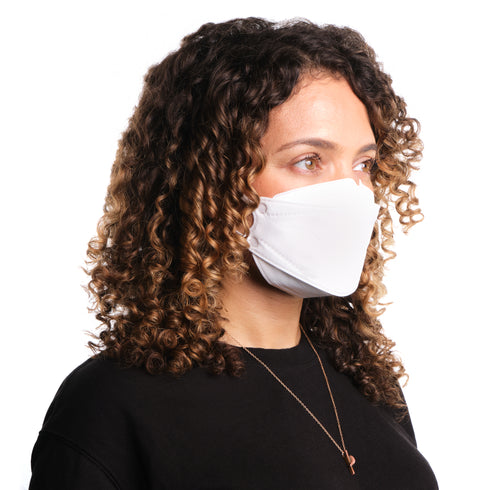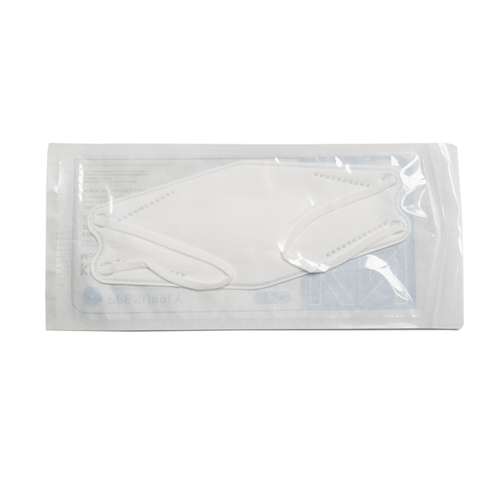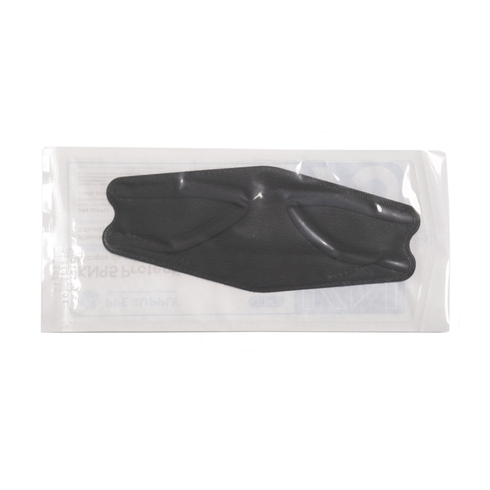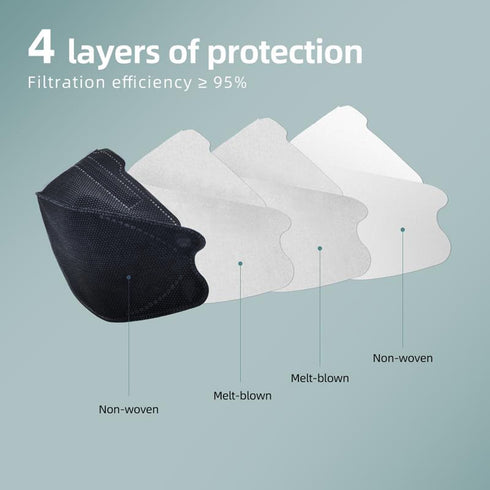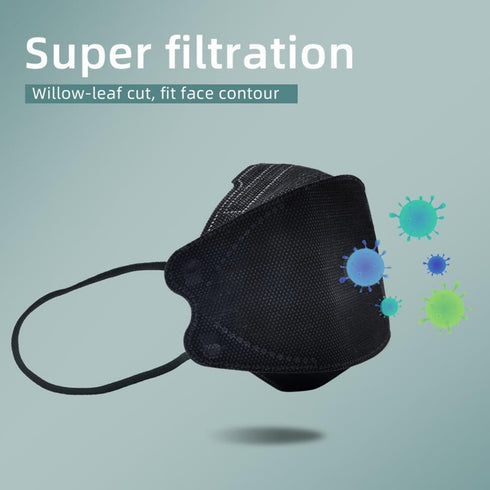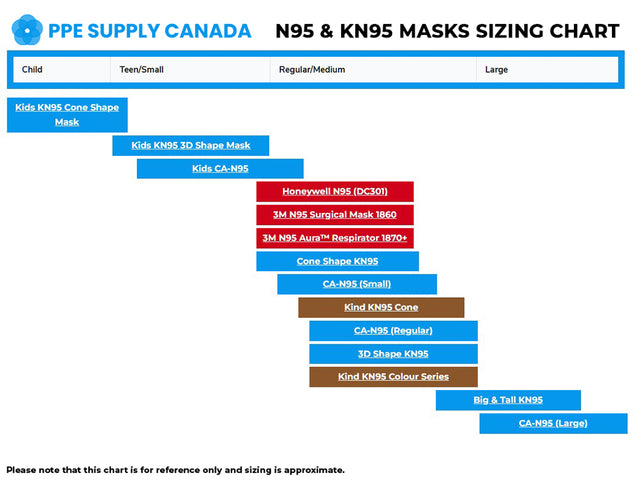HOW TO REUSE YOUR N95/KN95 MASK
Although masks of varying kinds have been the norm for quite some time now, there are still questions surrounding the extended use of N95/KN95 masks, the most recommended mask to don while protecting ourselves from COVID-19 and its evolving variants. How long can I wear an N95/KN95? Can I reuse an N95/KN95? If so, how do I reuse them and for how many times? These are important questions that not many seem to be clear on, yet they do factor into our everyday lives.
How can we ensure we are getting the most out of our masks, while always being equipped with proper and effective protection? Let's take a deeper look at how the answers to these questions are determined and how we can make the call for ourselves.
N95 VS. KN95: WHAT'S THE DIFFERENCE?
To answer this question we need to start by looking at the two different types of N95 masks, before comparing them to a KN95 mask. There are N95 masks that are equipped with wrap-around headbands and N95 masks that are equipped with ear loops. The N95 respirators that are equipped with headbands secure the respirator at the crown of the head and nape of the neck and are eligible to be NIOSH-approved. They create a much tighter fit and facial seal in comparison to their ear looped counterparts, however, they can be found to be less comfortable and not as suitable for long hours of wear. These masks are typically used by medical professionals in medical and high-risk settings.

N95 masks equipped with ear loops are still certified to filter out 95% or more of aerosols, but their facial seal is not as tight as a mask that is secured from the back of the wearer's head, and therefore it cannot be NIOSH-approved. These ear loops allow for longer hours of comfortable wear, in addition to easier donning and doffing, while still providing the same filtering efficiency.

A KN95 mask is only comparable to an N95 with ear loops. Comparing a KN95 mask to a NIOSH-approved N95 with headband straps is like comparing apples to oranges, as they are designed with particular uses in mind. Usually, when one is looking for a NIOSH-approved N95 respirator, their needs are different from those looking for an N95/KN95 (i.e., immunocompromised, working in a high-risk environment, etc.).
When looking at an N95 and KN95 mask, the main difference does not lie in the mask themselves, but rather in how they are certified. The National Institute for Occupational Safety and Health (NIOSH), a part of the Centers for Disease Control, has an inspection process that N95 masks are required to pass. However, KN95 masks are eligible to receive approval from the Food & Drug Association (FDA), which works through an emergency authorization for foreign certification.
This allows N95 masks to be the approved mask for healthcare and medical use in Canada and the United States, despite KN95 masks having many of the same features and providing equal effectiveness.
When comparing an ear looped N95 to a KN95 mask, it's important to note that neither certification process is superior to the other. Companies are able to manufacture masks for both standards, in both countries. N95 and KN95 masks are designed to filter out a minimum of 95% of potentially harmful aerosols and are composed of multiple layers of synthetic filtration materials (including polypropylene). Both an ear looped N95 and KN95 offer the same level of protection and filtration efficiency and are great for everyday use.
When looking for an effective, reliable N95/KN95 mask, focus on ensuring that they are from a reputable brand and retailer and have been independently tested by this retailer. You can read more about this here.
HOW LONG CAN I WEAR AN N95/KN95 MASK?
We are aware that N95 masks are more durable than surgical masks, as these masks lose their effectiveness after a handful of hours or less. This durability allows N95/KN95 to be reused and worn for extended periods of time, up to 40 hours, but there are certain things we need to do and look out for to ensure that our masks are always performing as intended and that we are refreshing them at the right time.
Many sources, including healthcare workers, have stated that they use a rotation method, where they have about 4-5 masks in constant rotation. When an N95/KN95 mask is not in use, they place the mask in a paper bag and allow it to dry out over the course of a few days. Recent tests show that the virus can remain active in an N95/KN95 for up to 72 hours, and the paper bag keeps the mask in a clean, isolated space, allowing it to effectively dry out and decontaminate.
Related products
Honeywell DC301 N95 Respirator Mask Made in USA (NIOSH)
KN95 Respirator Face Mask Individually Sealed
Using this method, if you were to take four (4) N95/KN95 masks and alternate them every three (3) days, your masks could last up to twenty (20) days.
Pro Tip: Write the date on the paper bag so that you are aware of how much time has passed before your next use!
How can we tell when an N95/KN95 mask is losing its efficacy and not providing the same effectiveness? Medical professionals resort to conducting frequent fit checks, in addition to inspecting the mask itself regularly.
If when wearing your N95/KN95 mask you feel air escaping from any gaps between the skin and the material, it's time to dispose of it and reach for a fresh one. After using a respirator over and over again, it begins to lose its ability to tightly seal to the wearer's face, thus diminishing the efficacy of the mask altogether.
Before donning your N95/KN95, ensure that it has not lost its shape, is visibly soiled or wet or shows general signs of wear and tear.
Aaron Collins, a mechanical engineer who runs the Mask Nerd YouTube channel, posts relevant and informative content on mask fits and testing. In a recent article, when discussing the power of N95/KN95 masks, he stated, "The filter material is so high performing that even with 40 hours of use, I haven't seen issues with filtration. Even after loading the mask with aerosol, they're still high performing."
WHEN TO THROW AWAY YOUR N95/KN95 MASK
It's time to dispose of your mask and reach for a new one when:
• It is worn in a high-risk setting
• It is torn, the straps are broken or have lost elasticity
• The fit loosens or shape is lost (i.e., collapsed cup, gaping)
• Becomes visibly soiled (including makeup)
• If it becomes wet from rain, snow, water or other external elements (condensation is okay, as long as it has been dried using the method discussed above)


HOW MANY TIMES CAN I REUSE AN N95/KN95 MASK?
There is no set number of times an N95/KN95 can be reused, but by carrying out the above practices, you'll be able to effectively determine when you should be swapping your mask out for a new one.
Before every reuse of the same N95/KN95 mask, ensure that it has been drying out for at least 72 hours in a clean and isolated area (such as a paper bag). Keep track of your rotated masks by writing the date on the bag before their drying period.
You could even indicate how many uses you've had with each mask on the bag as well, so you're able to gain an idea of how many to purchase or keep on hand.
HOW DO I REUSE AN N95/KN95 MASK?
With every reuse of N95/KN95 mask, you'll want to ensure that you're conducting a fit check as well as looking for signs of wear and tear.
Don the mask and blow out a few gusts of air. If you feel that air escape through a gap, then your mask has lost its efficacy.
If the mask is visibly soiled, wet from rain/snow/water, has ear loops that aren't as tight or tearing away from the mask - it's time to refresh your respirator for a new one.
Our Individually Sealed KN95 Masks feature a white interior layer, regardless of whether you purchase black or white, that allows you to clearly see when your mask is soiled or showcasing any signs of wear and tear. Extremely comfortable, breathable and equipped with soft yet dependable ear loop straps, you'll want to find ways to get the most out of these masks!
SHOP PPE SUPPLY CANADA'S INDIVIDUALLY SEALED KN95 MASKS


CONCLUDING THOUGHTS
The more we are equipped with the right knowledge of how to care for and maintain the integrity of our masks, the more we can get the most out of them while remaining protected.
The more uses we can get out of one mask reduces the number of masks that end up in a landfill, another bonus of implementing a rotation method. This also allows you to get more bang for your buck, as you won't need to replace your inventory so often.
With these simple things in place, you'll be able to stay on track and aware of where each of your masks stands in terms of protection levels and efficacy.
Stay safe!
Follow us
RESOURCES
https://english.elpais.com/society/2022-02-14/how-long-does-it-take-to-catch-coronavirus-depending-on-the-type-of-mask-youre-wearing.html
https://www.today.com/health/health/reuse-n95-kn95-mask-rcna15226
https://www.realsimple.com/health/preventative-health/how-to-reuse-your-kn95-kf94-or-n95-mask-safely
https://blogs.winona.edu/wellness/blog/how-to-reuse-n95-kn95-masks/
https://www.nytimes.com/wirecutter/blog/how-to-reuse-n95-kn95-and-other-disposable-masks/






